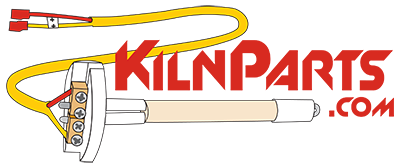Would you rather download this page as a PDF for easy printing? Click here.
The chart and examples below help illustrate how to interpret the information found in a kiln’s model number and on the nameplate. The examples below include a KS-1227-3”, 1027-208, 818-240 and 1027-240. - KM or KS

Information found in the Model Number
- Indicates if a kiln has a KM (Kiln Master Computer) controller or KS (Kiln Sitter) controller. If your kiln is an older manual model it may not have a KM or KS abbreviation.
- The first one or two digits (depending on the kiln) indicate the number of sides (16,12,10,8,7,6 or 4).
- The last two digits tell you how deep the interior of the kiln is (31, 27, 22, 18, 14, 09).
- A -3 behind the model number indicates your kiln has 3” thick wall brick rather than standard 2.5” brick.
- A “PK” behind your model number indicates your kiln is a Production Kiln (less common than standard kilns).
Information not in the Model Number
- Voltage - The listed voltage identifies the voltage your kiln is designed to run on.
- Phase - The listed phase identifies the phase your kiln is designed to run on.
- Amperage - The listed current or amperage draw of your kiln.
- Wattage - The total wattage your kiln is rated for.
- Max Temperature - The maximum temperature your kiln will reach when fired under the correct conditions.
| Skutt KS-1227-3” Number of Sides - 12 Kiln Depth - 27” Kiln Voltage - 240 Kiln Phase - Three |
Skutt 1027-208 Number of Sides - 10 Kiln Depth - 27” Kiln Voltage - 208 Volts Kiln Phase - Single |
Skutt 818-240 Number of Sides - 8 Kiln Depth - 18” Kiln Voltage - 240 Volts Kiln Phase - Single |
Skutt 1027-240 Number of Sides - 10 Kiln Depth - 27” Kiln Voltage - 240 Volts Kiln Phase - Single |
 |
 |
 |
 |
